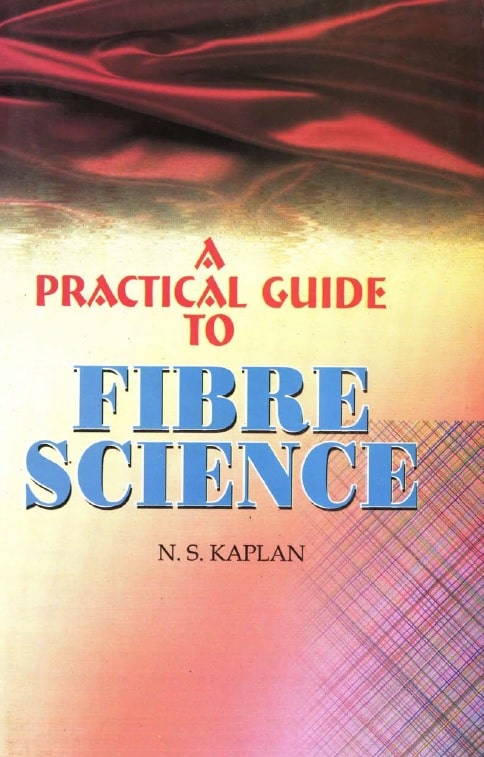
Contents
l. Textile Fibres 1
2. Processing of Textile Fibres 23
3. Cotton Fibres 93
4. Cotton Mixing and Blowroom Operations 112
5. Carding 122
6. Effects of Fibre Preparation on
Instrument Readings 132
7. Length of Cotton Fibres 150
8. Cotton Stickiness 166
9. White Specks 183
10. Fibre Dynamics 194
II. Roving Frame and Draw Frame 218
12. Metallic Card Clothing 234
13. Winding 248
14. Spinning Geometry 271
1
Textile Fibres
Fibers are natural or chemical structures that can be spun into yarns. Yarns then can be woven, knitted, or bonded into fabrics. Fiber properties and behavior are directly related to fabric performance and care. Learning about fibers and their characteristics will help you to understand fabrics better. Four major natural fibers and 23 man-made fibers are available. Natural fibers come from plants and animals. The plant fibers-cotton and linen-are made of cellulose. Animal fibers, silk and wool, are made of protein.
Two classes of man-made fibers are those adapted from cellulose (cellulosic) and those made entirely of chemicals (noncellulosic). Noncellulosic man-made fibers often are called synthetics. Each fiber is identified by a generic name. The Textile Fiber Products Identification Act that officially established the generic fiber classifications became effective in 1960. All fibers (natural or man-made), yarns, fabrics, and household textile articles (includes articles of wearing apparel, draperies, floorcoverings, furnishings, beddings, and other textiles customarily used in a household), are covered by this Act.
Fibrous materials should possess certain properties for them to be useful as textile raw materials. Those properties which are essential for acceptance as a suitable raw material may be classified as “primary properties”, while those which add specific desirable character or aesthetics to the end product and its use may be classified as “secondary properties”.
PRIMARY PROPERTIES
- Length; length-width ratio
- Tenacity (strength)
- Flexibility (pliability)
- Acceptable extensibility for processing
- Cohesion
- Uniformity of properties
Secondary Properties
- Physical shape (cross-section, surface contour, etc.)
- Specific gravity (influence weight, cover, etc.)
- Moisture regain and moisture absorption (comfort, static electricity, etc.)
- Elastic character – tensile and compression
- Thermoplasticity (softening point and heat-set character)
- Dyeability
- Resistance to solvents, corrosive chemicals, microorganisms,
- and environmental conditions
- Flammability
- Luster
PROPERTIES DESIRED FOR TEXTILE FIBERS
Apparel and Domestic application:
- Tenacity: 3 – 7 grams/denier
- Elongation at break: 10 – 35%
- Recovery from elongation: 100% at strains up to 5%
- Modulus of elasticity: 30 – 60 grams/denier
- Moisture absorbency: 2 – 5%
- Zero strength temperature (excessive creep and softening point): above 2150 C
- High abrasion resistance (varies with type fabric structure)
- Dyeable
- Low flammability
- Insoluble with low swelling in water, in moderately strong acids and bases and conventional organic solvents from room temperature to 1000 C
- Ease of care
INDUSTRIAL REQUIREMENTS
Tenacity: 7 – 8 grams/denier
Elongation at break: 8 – 15%
Modulus of elasticity: 80 grams/denier or more conditioned, 50 grams/denier wet Zero strength tempera ture: 2500 C or above
KEY FIBER PROPERTIES DETERMINED BY POLYMER COMPOSITION AND STRUCTURE:
- Meltwg Point
- Modulus
- Elasticity and recovery from strain
- Tensile strength
- Density
- Moisture absorption
- Dyeability
- Comfort
The ability of a fiber to withstand the rubbing or abrasion it gets in everyday use
POLYESTER
Characteristics
- Strong
- Crisp, soft hand
- Resistant to stretching and shrinkage
- Washable or dry-cleanable
- Quick drying
- Resilient, wrinkle resistant excellent pleat retention (if heat set)
- Textile Fibres 5
- Abrasion resistant
- Resistant to most chemicals
- Because of its low absorbency, stain removal can be a problem
- Static and pilling problems
Major End Uses
Apparel – essentially every form of clothing, dresses, blouses, jackets, separates, sportswear, suits, shirts, pants, rainwear, lingerie, childrenswear
Home Fashions – curtains, draperies, floor coverings, fiber fill, upholstery, bedding.
Comments – Of all the manufactured fibers, polyester is the most used. Polyester is the best washand- wear fiber. Unfortunately, because of the oversaturation of polyester 20 to 30 years ago, some consumers maintain a negative perception about the fiber. But, that is changing.
As with the other manufactured fibers, new developments in polyester have created a new attitude towards manufactured fibers. This is true, not only for manufacturers and designers, but also for consumers. In addition, when polyester is blended with other dry-clean only fibers, like wool, acetate, or rayon, the durability of the blended fabric improves and, in some cases, the fabrics can even be made washable, if the percentage of polyester is high enough.
